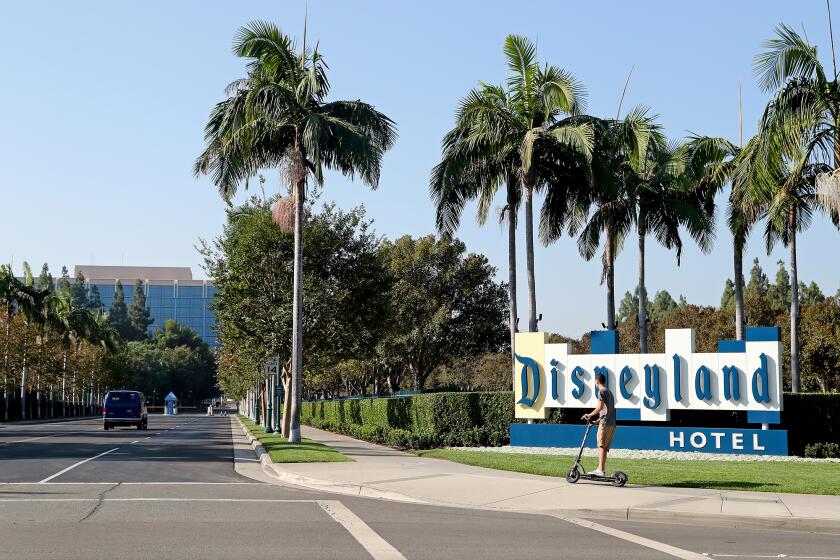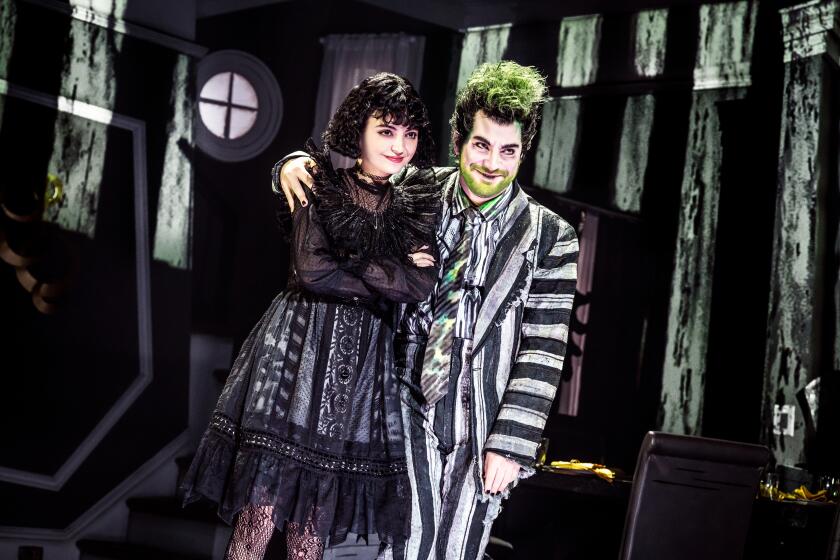Krall dips into the long-ago past
It’s a bit of technology whose name might elicit a puzzled look from millennials, and it sounded — scratchily — over the phone from Diana Krall’s apartment.
Those familiar with the history of vinyl will know that 78 rpm records, or 78s, enjoyed a heyday from the late 19th century to about the mid-20th. While independent music stores and knickknack shops often sport worn bins of long-play records, it’s decidedly rarer to spot a collection of the brittle discs that once preserved the voices of Bing Crosby and Al Jolson.
When jazz singer Krall mentioned that she learned many of the songs on her latest album, “Glad Rag Doll,” from her father’s 78 collection, the question arose: How playable are the old discs in 2014?
“Oh, yeah, you want to hear one?” Krall said. “I’ve got one, like, in my house. I’ve got thousands of them.”
After Krall excused herself for a few seconds to fire up the player, the reedy strains of Duke Ellington’s “Memphis Blues” crackled over the line. Krall, whose “Glad Rag Doll” tour will stop at the Segerstrom Center for the Arts in Costa Mesa on April 5, plans to end her show by playing a 78 onstage, though she declined to name the tune for fear of ruining the surprise.
That climactic touch won’t be the only retro element on Krall’s tour, which started in 2012 and will kick off its latest leg April 4. Film clips from the silent era will accompany about 80% of the show. Most of the tunes from the “Glad Rag Doll” album came from Krall’s family’s 78 stash, with tunes popularized by jazz bandleader Ted Lewis (the title track) and flapper singer Annette Hanshaw (“We Just Couldn’t Say Goodbye”), among others.
Or consider some of the other song titles: “There Ain’t No Sweet Man That’s Worth the Salt of My Tears,” “Just Like a Butterfly That’s Caught in the Rain,” “You Know, I Know Ev’rything’s Made for Love.” They don’t write them like that anymore.
For the “Glad Rag Doll” album, Krall collaborated with T Bone Burnett, one of the leaders of American music preservation through the “O Brother, Where Art Thou?” soundtrack and work with folk and blues artists. The Segerstrom show won’t be entirely retro, since Krall’s band includes electric guitar and keyboards. Still, with a vaudeville-style stage and vintage tunes and film snippets, it may feel closer to 1914 than the current year.
“Like T Bone said, ‘I don’t know what it is, but it’s great,’” Krall said. “That’s what I like. You can’t put a label on it.”
*
An imagined movie theater
To say that many of the songs in Krall’s repertoire predate MTV would be a gross understatement. When asked what strikes her most about the nearly century-old songs she recorded for “Doll,” she pointed to the lack of accompanying visuals.
“There’s no film,” she said. “There’s no film footage that goes with any of them like you have images of Frank Sinatra or Fred Astaire and Ginger Rogers or things like that from the 1930s and ‘40s. Unlike those Great American Songbook standards — you think of ‘Top Hat’ and immediately get a visual of Fred Astaire dancing with Ginger Rogers.
“So what I’ve done in my show is that I’ve chosen films, mostly silent films, to put behind the songs, to create like a movie theater out of my own head.”
Imagining old movie theaters seems to have become a trend of late. A pair of films about the silent days of moviemaking, “The Artist” and “Hugo,” vied for the Best Picture Oscar in 2011 (the former, shot in black and white with only momentary spoken dialogue, won). Last year, the Pageant of the Masters in Laguna Beach featured images of Buster Keaton, Laurel and Hardy and other silent clowns in its summer production, “The Big Picture.”
If Krall sat down to talk with “Hugo” director Martin Scorsese or the Pageant staff, the conversation might last for hours. On the phone, she rattled off such decidedly non-household names as cross-eyed comedian Ben Turpin, who served for a time as Charlie Chaplin’s onscreen foil, and French film pioneer Georges Melies.
Those silent nuggets are regular viewing in the home Krall shares with her husband, singer-songwriter Elvis Costello, and their two sons. Krall noted that she hasn’t seen “Hugo” yet herself — she’s waiting for her boys to be older so they can all enjoy it together. Chaplin, though, already fits the bill.
“We were watching the eating machine the other day from ‘Modern Times,’” Krall said. “You know, this is all new for my kids.”
*
‘Where we’ve been’
Tapping the past for inspiration has long been Krall’s forte. Many of the songwriting credits on her albums amount to a who’s-who of 20th-century jazz and Tin Pan Alley greats — Johnny Mercer, Irving Berlin, Rodgers and Hart. The Los Angeles Times, reviewing her for the first time in 1995, called her “a singer-keyboardist out of the Nat (King) Cole tradition, a performer exceptionally talented in both pursuits.”
Evidently, Krall’s historic knowledge has endeared her to others who share her passion: Paul McCartney enlisted the Grammy winner as the bandleader for his 2012 album “Kisses on the Bottom,” which consists mostly of pop and jazz standards.
Krall’s performance, her fourth at Segerstrom, will mark at least the second jazz concert at the venue in the last month to provide a tour through history. Wynton Marsalis and the Jazz at Lincoln Center Orchestra, in a March 14 appearance, performed a program made up entirely of Duke Ellington and Count Basie tunes, with Marsalis offering narration throughout.
As far as Segerstrom President Terry Dwyer is concerned, there may be an appeal to such a retro-themed show beyond simple nostalgia.
“Our society and our culture is going through such rapid change with technology and the economy and diversity of our population,” he said. “I think, particularly in the electronic era, there can be so much change, it can be unsettling at times. There can be a sort of comfort to reach back and enjoy the classics as a touchstone about where we’ve been and, ultimately, where we’re going.
“It is a time that calls for that. So the artists that are great interpretive artists who interpret the classics, like Diana Krall, are really to be treasured in this day and age.”
If You Go
Who: Diana Krall
Where: Segerstrom Center for the Arts, 600 Town Center Drive, Costa Mesa
When: 7:30 p.m. April 5
Cost: Starts at $59
Information: (714) 556-2787 or https://www.scfta.org
All the latest on Orange County from Orange County.
Get our free TimesOC newsletter.
You may occasionally receive promotional content from the Daily Pilot.



